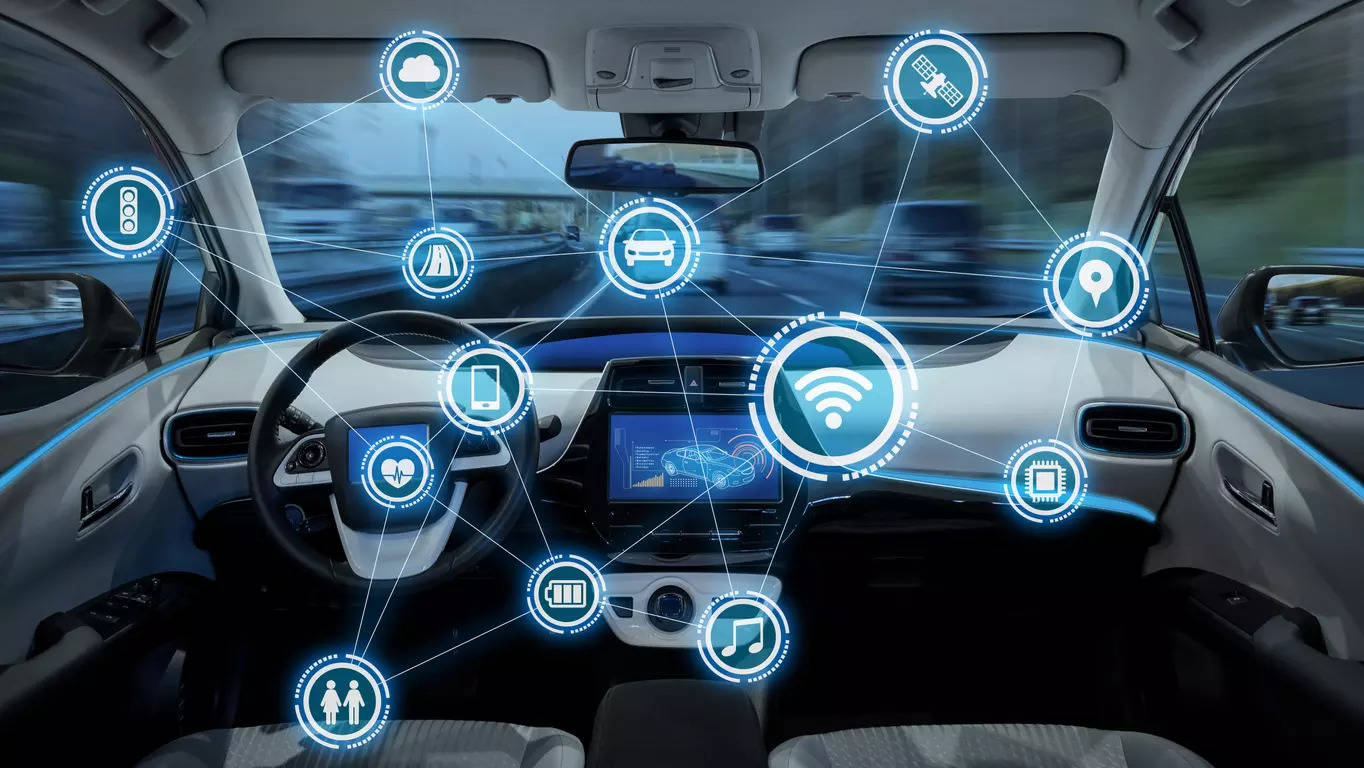How tech cos leverage the opportunity to stay ahead, ET Auto
New Delhi: A few decades ago, if someone said cars could dance to the tune of a Bollywood song, it would have been dismissed as a joke about a toy car. But early this year, the world saw Tesla cars dancing and syncing their headlights to the tune of the famous Naatu Naatu song. This and many other feats are being made possible with softwarisation in vehicles!
As technology dominates various sectors, the prospects for the automotive industry are immense. Though the ‘utility’ aspect is questionable, technology companies see this as a blend of convenience, experience and customisation for the consumers. This in turn is bringing up new opportunities for the OEMs to stay ahead of the curve: investments for the industry, and for consumers the experience of the scope of things to come.
So big is the role of softwarisation in the automotive industry that the OEMs’ spending in this area is expected to grow 9% year-on-year, according to Kishor Patil, founder, CEO & MD of KPIT Technologies.
Leveraging this opportunity, the Pune-based KPIT wants to “go for global leadership in scale and competence.” Patil believes that the technology transformation in the automotive industry will continue for at least the next 8-10 years, if not more. The company is employing over 12,000 specialists in its engineering team.
In 2013, KPIT Cummins Infosystems became KPIT Technologies. In 2018-19, the company took a significant step and announced its focus only on automotive and mobility. It decided to merge and demerge with Birlasoft to create two entities. KPIT divested over 70% of its business to become an automotive software player and focus on top 25 clients.
KPIT Technologies increased its market cap from USD 300 million in 2019 to about USD 5 billion by November 2023. The business diversion to a deeper reach in the automotive industry with technology and softwarisation seems to be paying off. In Q2 FY24 itself, the technology company reported consolidated revenue growth of 51.7% year-on-year (YoY) and USD revenue growth of 54.2% YoY.
Software-developed vehicles
Anup Sable, CTO, KPIT Technologies, is confident about the industry’s transition to software-developed vehicles (SDVs). About the emerging trends, he said there are many engineering problems like bringing distributed architecture to central architecture to be solved. There is a lot of software at the platform level, middleware level and at the operating system level. A great deal of integration is needed and it will result in the vehicle becoming a platform on which innovation can happen.
“There will be players who will take the lead and others who may be laggards. But from now till 2030, businesses will comprise SDVs. This trend will continue till the late 2030s, and companies will continue to bring SDVs in either phase one or phase two,” he said.
Globally, KPIT is working on six SDV programs with the OEMs which have a tentative schedule of production (SOP) from 2025-2027. Sable expects more displays, sensors and cameras being incorporated in the cars of the future. According to him, the challenge will not be innovation of features but its implementation mechanism.
By 2026-2027, it is expected that about 25%-30% of the companies’ R&D budget will go to software and central computer architectures.
“A lot of innovation will also happen on the central architecture. For instance, a major change may occur when the Controller Area Network (CAN) goes away and Ethernet takes over,” he added.
While there won’t be much difference in the appearance of the vehicles, customers will start experiencing the difference of SDVs inside the cars. The power of differentiators will come with software integration.
“Since the technology is new, the car companies’ ability to fix problems and add new features will require mechanisms to take timely customer feedback. Based on this, OEMs will need to become agile in implementing the changes.”
For the democratisation of innovation, enabling a partnership is believed to go a long way, where software companies provide the platform and distribution to an App Store, and the innovator implements it. This way, as in handsets, customised subscription of applications will become a popular trend in the near-future, Sable said.

New Delhi: A few decades ago, if someone said cars could dance to the tune of a Bollywood song, it would have been dismissed as a joke about a toy car. But early this year, the world saw Tesla cars dancing and syncing their headlights to the tune of the famous Naatu Naatu song. This and many other feats are being made possible with softwarisation in vehicles!
As technology dominates various sectors, the prospects for the automotive industry are immense. Though the ‘utility’ aspect is questionable, technology companies see this as a blend of convenience, experience and customisation for the consumers. This in turn is bringing up new opportunities for the OEMs to stay ahead of the curve: investments for the industry, and for consumers the experience of the scope of things to come.
So big is the role of softwarisation in the automotive industry that the OEMs’ spending in this area is expected to grow 9% year-on-year, according to Kishor Patil, founder, CEO & MD of KPIT Technologies.
Leveraging this opportunity, the Pune-based KPIT wants to “go for global leadership in scale and competence.” Patil believes that the technology transformation in the automotive industry will continue for at least the next 8-10 years, if not more. The company is employing over 12,000 specialists in its engineering team.
In 2013, KPIT Cummins Infosystems became KPIT Technologies. In 2018-19, the company took a significant step and announced its focus only on automotive and mobility. It decided to merge and demerge with Birlasoft to create two entities. KPIT divested over 70% of its business to become an automotive software player and focus on top 25 clients.
KPIT Technologies increased its market cap from USD 300 million in 2019 to about USD 5 billion by November 2023. The business diversion to a deeper reach in the automotive industry with technology and softwarisation seems to be paying off. In Q2 FY24 itself, the technology company reported consolidated revenue growth of 51.7% year-on-year (YoY) and USD revenue growth of 54.2% YoY.
Software-developed vehicles
Anup Sable, CTO, KPIT Technologies, is confident about the industry’s transition to software-developed vehicles (SDVs). About the emerging trends, he said there are many engineering problems like bringing distributed architecture to central architecture to be solved. There is a lot of software at the platform level, middleware level and at the operating system level. A great deal of integration is needed and it will result in the vehicle becoming a platform on which innovation can happen.
“There will be players who will take the lead and others who may be laggards. But from now till 2030, businesses will comprise SDVs. This trend will continue till the late 2030s, and companies will continue to bring SDVs in either phase one or phase two,” he said.
Globally, KPIT is working on six SDV programs with the OEMs which have a tentative schedule of production (SOP) from 2025-2027. Sable expects more displays, sensors and cameras being incorporated in the cars of the future. According to him, the challenge will not be innovation of features but its implementation mechanism.
By 2026-2027, it is expected that about 25%-30% of the companies’ R&D budget will go to software and central computer architectures.
“A lot of innovation will also happen on the central architecture. For instance, a major change may occur when the Controller Area Network (CAN) goes away and Ethernet takes over,” he added.
While there won’t be much difference in the appearance of the vehicles, customers will start experiencing the difference of SDVs inside the cars. The power of differentiators will come with software integration.
“Since the technology is new, the car companies’ ability to fix problems and add new features will require mechanisms to take timely customer feedback. Based on this, OEMs will need to become agile in implementing the changes.”
For the democratisation of innovation, enabling a partnership is believed to go a long way, where software companies provide the platform and distribution to an App Store, and the innovator implements it. This way, as in handsets, customised subscription of applications will become a popular trend in the near-future, Sable said.


